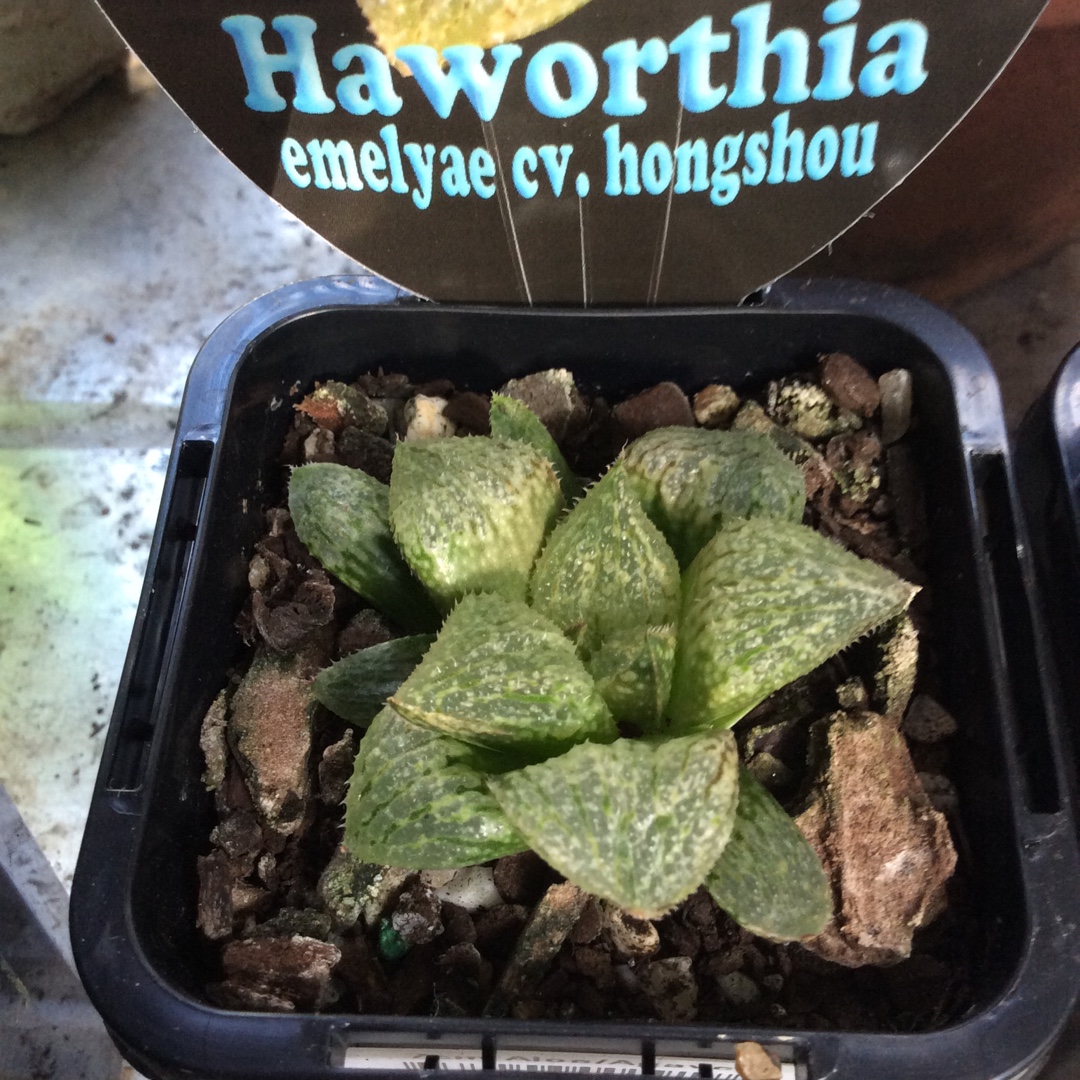
Haworthia Emelyae cv. Hongshou
Haworthia 'Emelyae Hongshou'
This species is one of the "retuse" species of Haworthia, meaning that it usually grows sunken beneath the ground with its flattened leaves only showing on the surface. Its rosette of succulent leaves are turned back ("retuse") so as to provide a flat and level face, on the surface of the ground. In this form, it is similar to other retuse haworthias (e.g. Haworthia retusa, Haworthia bayeri, Haworthia springbokvlakensis, Haworthia pygmaea, Haworthia mirabilis and Haworthia magnifica).A distinctive feature is the convex shape of the leaf faces. The faces appear to bulge upwards, with the leaf tips bent back downwards. Another distinctive feature is the flecked, speckled (often pink) vein markings on the leaf faces. These markings have made this species a very popular ornamental plant for cultivation. Haworthia generally resemble miniature aloes, except in their flowers. They are popular garden and container plants. The plants can grow solitary or can be clump-forming. Their flowers are small, white and very similar between species. But their leaves show wide variations.
Contributed by @jobakes
-
Partial shade
-
Very little water
-
Frost Hardy: 23F (-5°C)
-
Free draining
Common name
Haworthia 'Emelyae Hongshou'
Latin name
Haworthia Emelyae cv. Hongshou
type
Succulent
family
Asphodelaceae
ph
5.0 - 7.0 Acid - Neutral
Plant & bloom calendar
-
Best time to plant
-
When the plant will bloom
full grown dimensions
 0.30 M
0.20 M
0.30 M
0.20 M
Haworthia Emelyae cv. Hongshou
This species is one of the "retuse" species of Haworthia, meaning that it usually grows sunken beneath the ground with its flattened leaves only showing on the surface. Its rosette of succulent leaves are turned back ("retuse") so as to provide a flat and level face, on the surface of the ground. In this form, it is similar to other retuse haworthias (e.g. Haworthia retusa, Haworthia bayeri, Haworthia springbokvlakensis, Haworthia pygmaea, Haworthia mirabilis and Haworthia magnifica).A distinctive feature is the convex shape of the leaf faces. The faces appear to bulge upwards, with the leaf tips bent back downwards. Another distinctive feature is the flecked, speckled (often pink) vein markings on the leaf faces. These markings have made this species a very popular ornamental plant for cultivation. Haworthia generally resemble miniature aloes, except in their flowers. They are popular garden and container plants. The plants can grow solitary or can be clump-forming. Their flowers are small, white and very similar between species. But their leaves show wide variations.
Flowering Season
From Mid Summer TO Mid Summer
Haworthia and Haworthiopsis will produce flowers, usually a few weeks after the "longest day" of the year, i.e. in Summer. However the flowers aren't very exciting, although because Haworthia and Haworthiopsis are very slow and compact plant not much happens visually during the year therefore the flowering period can be a welcome treat to show that your plant is actually "alive".
Planting Young Plants
From Early Spring TO Early Spring
When you re-pot your Haworthia or Haworthiopsis you can separate the offsets from the parent. Use a sharp knife and cut as close to the parent plant as possible, ensure the offset has some roots. Wait a day for the offset to dry slightly then pot up in a small container using a standard potting or cactus compost mix. Water and keep warm.
















